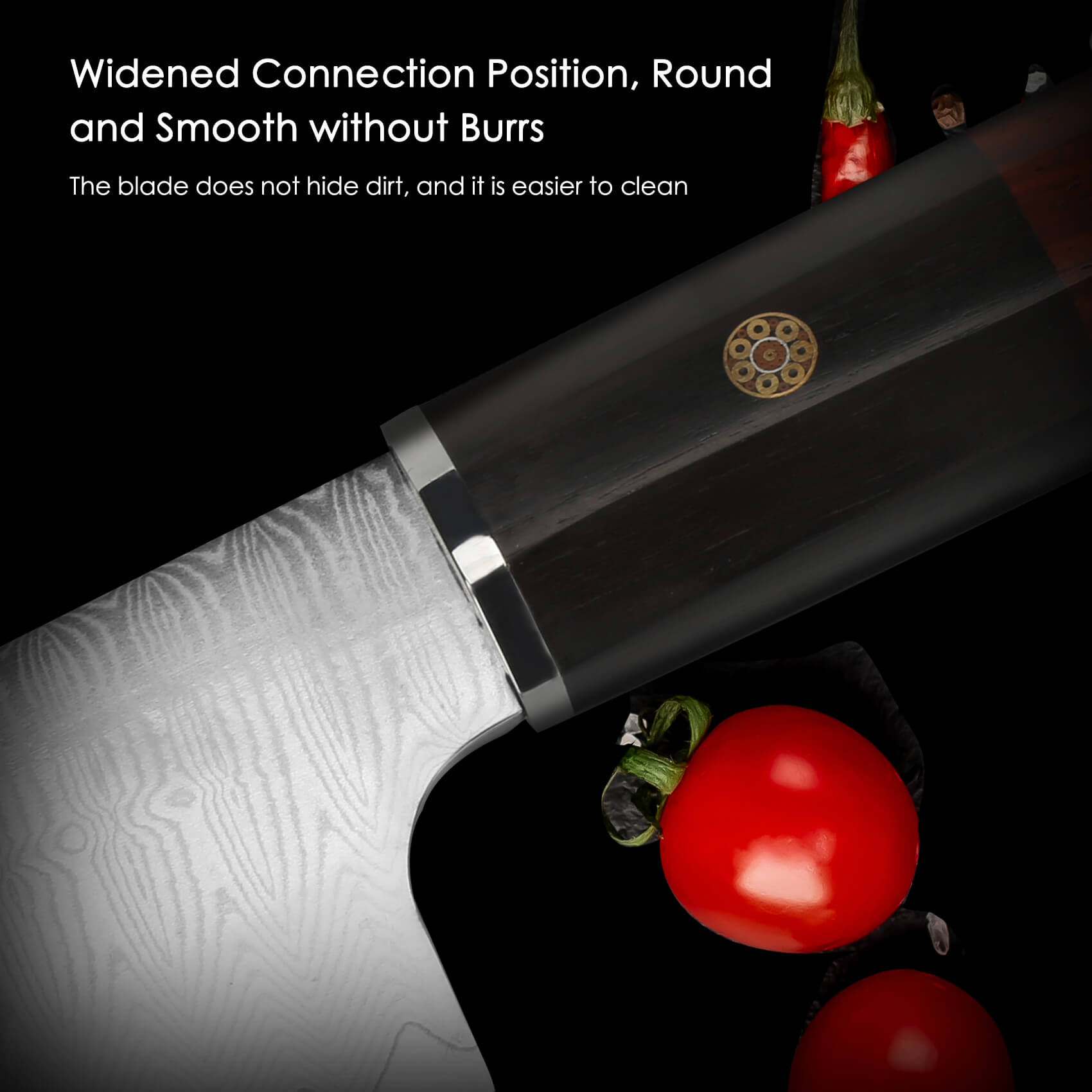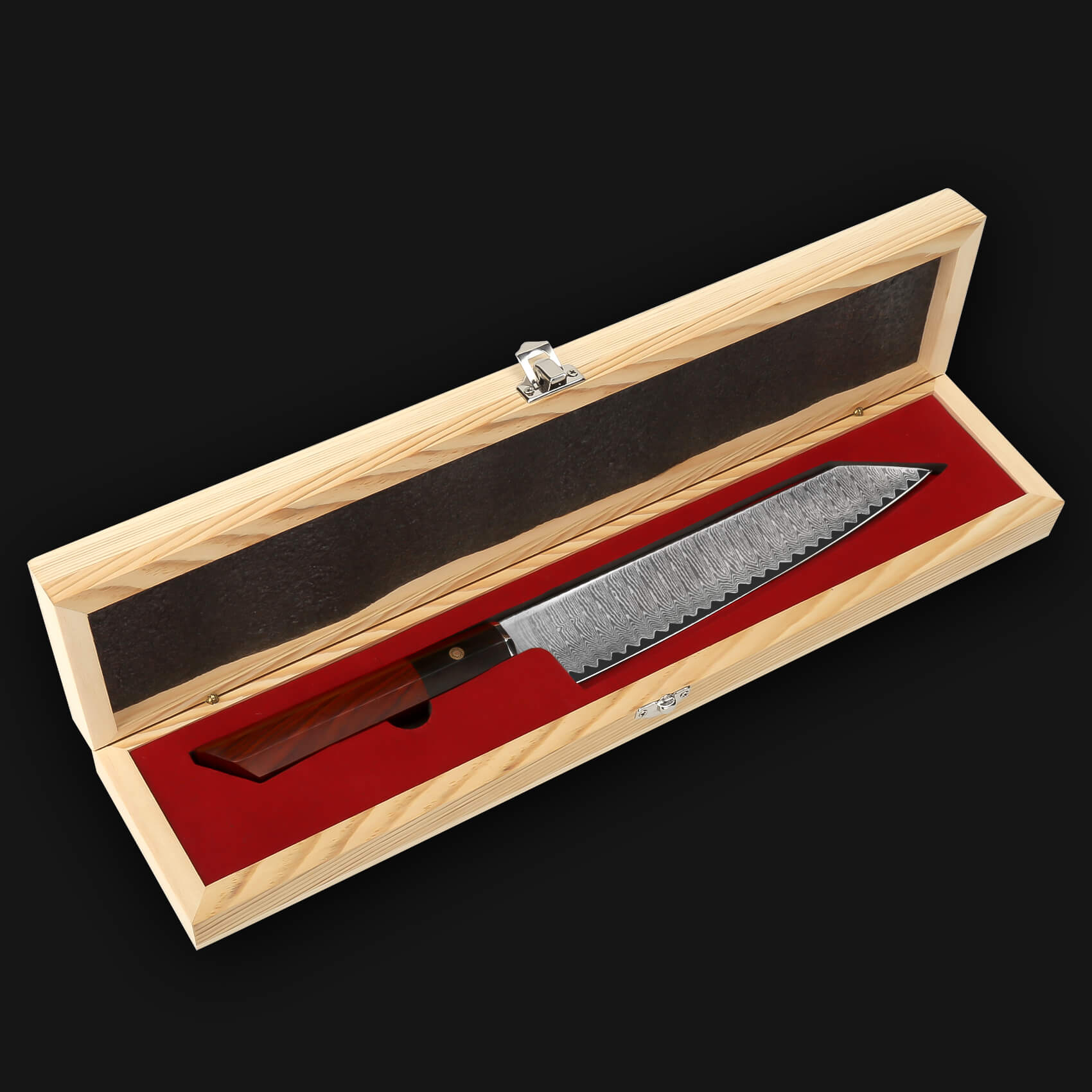Damascus Steel: The Beginners' Guide
Damascus steel is famous steel with patterns varying from light, watery to dark. Apart from attractiveness, individuals value steel because of its keen edge, durability, and flexibility. All weapons that come from this steel, like the Damascus knife, are superior to those from other metals like iron. This metal has a huge history, myth, and stories surrounding its performance naming and the finishes of the steel. Let's look at everything you need to understand about this ore.
Where Damascus Steel Gets Its Name?
There are many myths, stories, and history surrounding this steel and how it's named. It's unclear where this name comes from due to the numerous stories surrounding it. Nevertheless, we've got three possible theories surrounding the naming of this ore. The name originates from the steel the artisan made in Damascus, traded or purchased in Damascus and a sword or knife the artisan crafted from the steel or ore.
Individuals used to manufacture the steel routinely up to the 18th century, before the depletion of the original iron ore source in Indian mines. The true ore or its products isn't available in the market due to a lack of knowledge about its core chemical makeup and the extinction of the original ore. Nonetheless, through various modern and historical research, blacksmiths have realized how they can create this valuable and marvelous metal in the modern setting.

What is Damascus Steel?
It's unique steel with alternating dark or light grains and is rich in carbon in its original material. The tools and blades such as the Damascus knife are valuable and finest worldwide; thus, you have to spend a lot to achieve them. These ore products outperformed the other contemporary steel and iron in ancient times because of their hardness, flexibility, toughness, durability, corrosion, and rust-free.
What is In the Steel?
A pure form that's free from any modern variants has a high ultra-carbon content. The carbon content will depend on whether the blacksmith created it using a crucible or pattern welding method. The crucible steel, which most individuals refer to as wootz, presents the original form containing 1-2% carbon content, most of them averaging a 1.5% carbon content. It's an amount that's impossibly high among most bladesmithing standards. Make sure to know the difference between Damascus steel and stainless steel and pick the real Damascus steel knife.

In addition, the metal also contains some key elements like vanadium, which are important in enhancing their functionality and performance. However, the chemical content of the ore, which the blacksmith used to source the steel, wasn't relieved during the vaporization of the raw material. Most scientists, researchers, and institutions have made several studies and attempted to check the ore's composition and what made it so special.
From the findings, they have manufactured the modern pattern-welded Damascus with high carbon steel composition. The steel also has additional elements to enhance its durability, functionality, and performance. These elements include nickel, vanadium, or other trace elements, largely depending on the type of recipe or manufacturing method.
The Finishing of the Damascus Blade
The blacksmiths harden or anneal the blades in various forms depending on the intended purpose of the blade. The process of hardening the blade into different forms takes place after the blacksmith has welded the billet of the pattern into the final form. To bring out the perfect contrast, the manufacturer etches all the modern Damascus products in acid. While etching these products, the pattern welded Damascus takes more time as compared to the crucible steel.
Damascus Variants
There is a high demand for this ore and its products due to its legendary status and features. Additionally, with the current technology, the products come in different products or blades, where individuals currently can buy Damascus knives, blades, handguns, rings, and many others. These products come with different designs and Damascus blends or variants. Let's look at a few interesting variants of this ore.
● Crucible steel
Most individuals commonly know it as a wootz or water steel, and it's the original form of the steel, which is now extinct. Unluckily, the blacksmiths had little to zero knowledge of their chemical composition before the extinction. Thus, users can't easily get this natural ore and products. The variant comes with a magical combination of flexibility and toughness to enhance its performance and functionality.
In ancient times, the blacksmiths made this variant by melting a specific distinct Indian iron ore carefully in a crucible containing flux material like glass and plant matter. After melting the Indian iron ore, the blacksmiths allow it to cool carefully; this process results in a forge-ready ingot. Most modern blacksmiths have failed to successfully recreate this steel due to a lack of information about the composition of the natural ore.

● Pattern-welded steel
It comes in modern patterns or a forge-welded blade form. This variant originates from the blacksmith's impressive artwork by piling together two small pieces of alternating steel forms. Later the blacksmiths tack weld the pieces together before throwing them into the forge until they reach the appropriate color.
After getting the right color, they remove the scorching steel stack and press or pound them; thus, fusing the pieces into a single lump. After the process is completed, they cut the new bullet and stick them before welding them together again. When welding the pieces together again, the smith repeats the procedure multiple times to achieve the multiple layers on the product.
● Stainless Damascus form
It's a form of a variant that originates from a natural evolution of a pattern welded variant. When creating these products, the blacksmiths follow a standard pattern or procedures to achieve top-notch results. However, it'll be essential to substitute some two stainless steel with two traditional high carbon steel, which is common in the processing of Damascus products. This steel has various advantages as they are easy to maintain and are highly impervious to corrosion and rust.

Final Thoughts
Damascus steel is one of the ancient and valuable ores blacksmiths used to make products and weapons with numerous features that outperformed the other metals. The natural ore has a high carbon content, which enhances the durability and performance of the products. The products, including swords and knives, come in crucible, pattern-welded, and stainless steel variants. However, currently, the blacksmith can't produce goods from the natural ore as the chemical content of the ore was unknown when the material vaporized.





